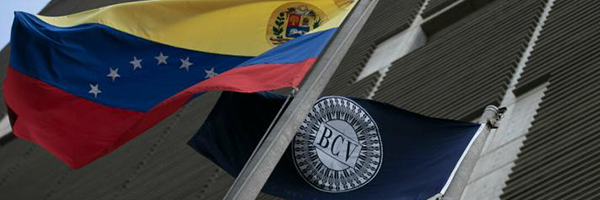A Glance at Venezuela’s Economy as the Year Ends
 Misión Verdad, Orinoco Tribune, October 9, 2024 —
Misión Verdad, Orinoco Tribune, October 9, 2024 —
As we enter the final quarter of the year, the Venezuelan economy is projected to finish the year with significant achievements in important sectors.
During the last few years, Venezuelan economic policy—under the critical conditions of illegal sanctions— has had to deal with a significant drop in foreign currency income, which has meant negative figures in its gross domestic product (GDP), a sharp depreciation of the national currency, and finally, hyperinflation which, during the 2019-2022 period, meant the loss of purchasing power of the population and very high costs for economic activities in general.
The variables of growth, exchange, rate and inflation are, if you will, deeply linked elements in an economy such as the Venezuelan one, structurally marked by oil rentierism.
Resolving the critical knots in this system of indicators has been the central focus of the economic management of the national government, and, according to official figures from the Central Bank of Venezuela (BCV), there are significant positive prospects for the end of the year.
The data so far in 2024 are showing that many negative or less optimistic forecasts about the Venezuelan economy have been disproven.
Expectations
For the end of 2023 and until the middle of this year, various projections by economic analysts for 2024 simply have not occurred.
One of these scenarios was described by Luis Oliveros, economist and dean of the Faculty of Economic and Social Sciences of the Metropolitan University (Unimet), who was a speaker at the seminar “How to Budget 2024?” presented by the Venezuelan-American Chamber (VenAmCham) in September 2023.
The specialist estimated that inflation would close at 250% and an “optimistic” exchange rate would be 49.48 bolivars per US dollar.
In April, the International Monetary Fund (IMF) estimated that Venezuela’s GDP would grow 4.2% this year and that the price system would suffer from 50% inflation.
In May of this year, the Economic Commission for Latin America (ECLAC) recalculated its growth forecast for Venezuela’s GDP in 2024, bringing the figure from 3.8% to 4%. Curiously, the same publication of this organization estimated that South America would grow 1.6% this year, but, although Venezuela appears well above the regional average, it stated that the country would remain on the path of “low growth.”
Last June, with data from the first economic quarter, the Venezuela Chapter of the United Nations Development Program (UNDP) stated in a bulletin that the economy would close this year with around 4.2% growth and an accumulated inflation of 30% over the year.
In June 2024, the consulting firm Ecoanalítica predicted a “fragile” GDP growth of 4%.
Reality
Regarding GDP growth, with the BCV figures now confirmed for the first two quarters of the year, the expectations of various analyses are clearly being exceeded.
The economy experienced a notable growth of 8.78% in this indicator during the second quarter of 2024. This figure follows the increase of 8.40% recorded in the first quarter of this year compared to the same period in 2023. The strong performance is driven by both oil and non-oil economic activities. These items grew, in the second quarter of 2024, by 11% and 6.5%, respectively.
It is very likely that the growth rate will continue until the end of the year, considering that it is in the last quarter when there is usually more momentum in commercial activities and the flow of goods and services.
The exchange rate, or the value of the US dollar calculated in bolivars, according to the rate published by the BCV, has practically remained unchanged, fluctuating between 36 and 38 bolivars since the period of January to September.
However, since last July, there have been irregular behaviors in the parallel exchange rate. Since the period of January to July, there was a differential between 5 and 8% between both rates, which has now widened to reach 12% and 15%, a gap that has created new distortions, especially in informal commercial activities, which include retail exchange activity through informal channels.
Regarding inflation, considered one of the most important problems of the economy, Venezuela’s inflation is recorded at 11.5% so far this year from January to September, a figure well below—almost 10 times below—the level reported in the same period of 2023, when the indicator was 104.9%, according to the BCV.
According to the institution’s report, Venezuela’s National Consumer Price Index (INPC) was 0.8% during the ninth month of the year, which reflected a reduction compared to August (1.4%).
“Inflation in September 2024 is the lowest observed for September since the recording of this metric began at the national level in 2008,” the BCV said.
2024 will be the least inflationary year in the context of the induced economic crisis and it could push the Venezuelan government to establish a single-digit inflation target for 2025, which from the present perspective is clearly possible.
The BCV also indicated that the deceleration of inflation has been possible “despite the multiple limitations to international financing and assets due to the unilateral measures imposed” on the country by the United States and its vassals.
“The clear progress in price stabilization is the palpable result of the new economy and the efforts of all Venezuelans,” the institution stated.
The Venezuelan economy is going through a virtuous period in which activities in the area continue to grow. The availability of goods and services maintains an increasing trajectory. The depreciation of the bolivar against the dollar has been contained, and inflation has slowed down to its lowest levels in over a decade.
